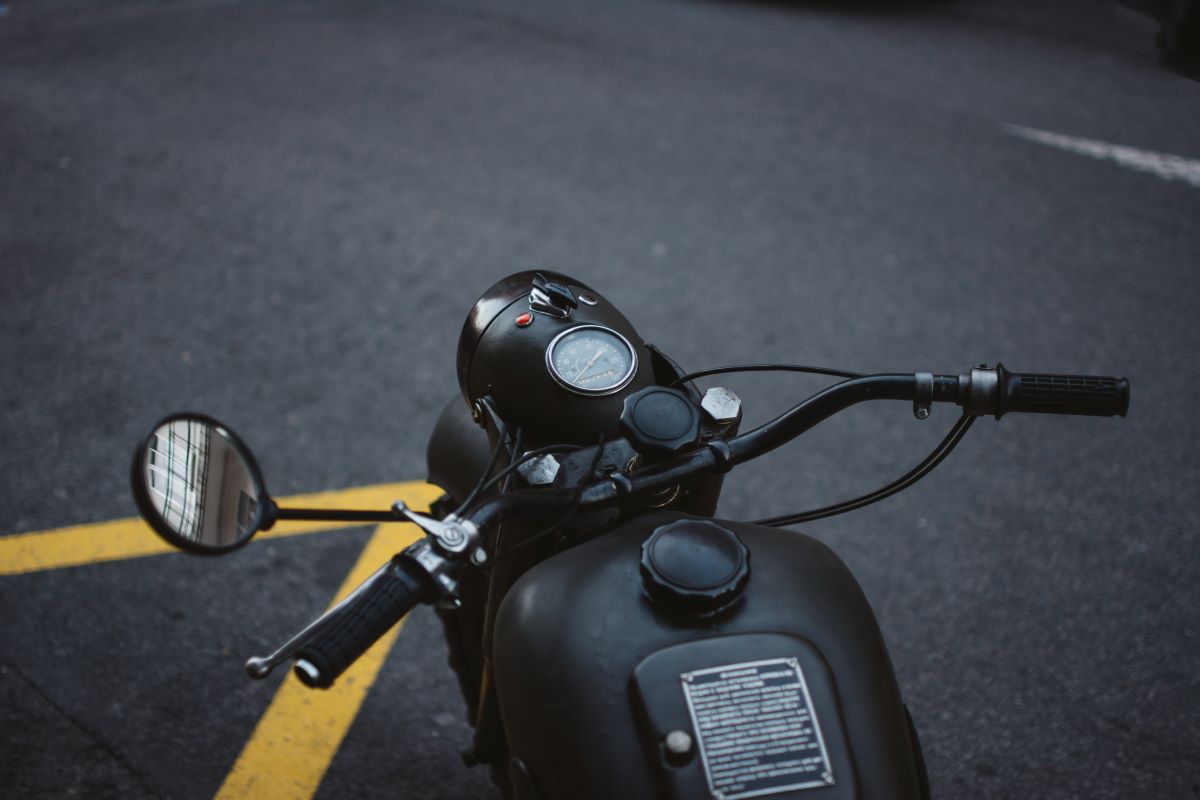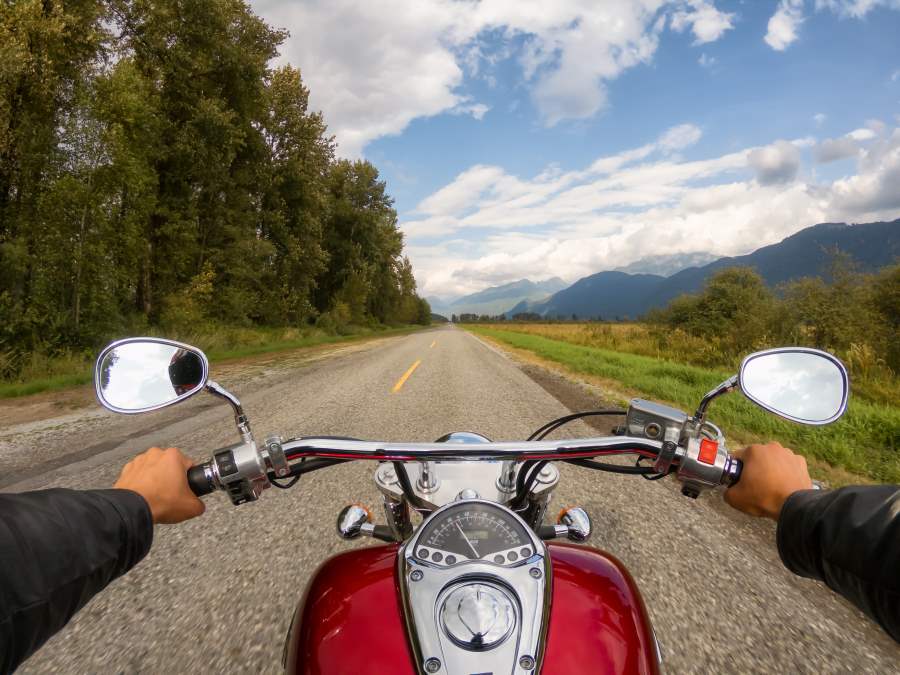
What are the Types of Motorcycle Handlebars & How to change it

Motorcycle handlebars are a critical component connecting riders to their bikes. They are not just steering mechanisms; they define a rider's experience and style. For any rider to have a safe and enjoyable journey, it is important to know the types of motorcycle handlebars and how to change and adjust them.
What are Motorcycle Handlebars?
Motorcycle handlebars serve as the primary steering control for a bike, allowing the rider to navigate and control the direction of the motorcycle. These handlebars are typically made from durable materials such as steel or aluminium.
The materials used ensure strength and stability, which are crucial for the rider's safety. The handlebars are an essential connection point between the rider and the motorcycle, enabling precise control over the bike's movements.
What are the Types of Motorcycle Handlebars?
There are 13 types of motorcycle handlebars, which are crucial for any rider to understand to control the bike and have a smooth ride:
- Motocross Handlebars: Engineered for off-road adventures, Motocross handlebars offer enhanced control and manoeuvrability on dirt tracks. They are characterised by a slightly higher rise and a crossbar, providing additional strength.
- Clip-On Handlebars: Popular among sportbike enthusiasts, Clip-On handlebars attach directly to the fork tubes, promoting an aggressive riding position. This setup enhances control, which is ideal for high-speed manoeuvres on the track.
- Tracker Handlebars: A favourite in the custom bike scene, Tracker handlebars offer a laid-back, relaxed riding posture with a touch of vintage flair. They feature a wide, flat design that complements the aesthetics of classic and custom motorcycles.
- Drag Handlebars: Drag handlebars are all about style and creating a streamlined profile for high-speed cruising. These bars often have minimal rise and are positioned forward, contributing to a stretched-out riding position.
- Z-Bar: The distinctive Z-bar handlebars feature a unique shape resembling the letter 'Z,' adding a bold aesthetic to the motorcycle. They are often chosen for custom bikes seeking a unique and eye-catching design.
- Clubman Handlebar: Inspired by cafe racer culture, Clubman handlebars contribute to a forward-leaning riding position, ideal for quick and agile manoeuvres. These bars have a distinctive downward curve and offer a sporty appearance.
- Moustache Handlebar: With a gentle upward curve resembling a moustache, these handlebars offer a classic and comfortable grip. Moustache handlebars are often associated with cruiser-style motorcycles, providing a laid-back riding experience.
- Keystone Handlebar: Known for their angular design, Keystone handlebars provide riders with a sporty and aggressive stance. The angled bars offer a unique look and can enhance control during spirited rides.
- Ape Hangers: Ape hangers are the highest handlebars that elevate the rider's hands, creating a distinctive look and relaxed riding posture. Ape hangers come in various heights, allowing riders to customise the level of lift.
- Breezer Handlebar: Combining style and functionality, Breezer handlebars offer a relaxed grip, perfect for cruising along scenic routes. These bars typically have a gentle rise and provide a comfortable riding position.
- Chumps Handlebar: Characterised by a simple design, Chumps handlebars with medium rise provide a no-nonsense approach to motorcycle control. They are often chosen for minimalist custom builds, emphasising functionality.
- H and Window Handlebar: Offering style and functionality, the H and Window handlebars provide a comfortable grip for extended rides. The H shape adds a distinctive touch, while the window design contributes to a lightweight appearance.
- Frisco Handlebar: Featuring a distinctive upward curve, Frisco handlebars add a touch of rebellion to a motorcycle's appearance. These bars are often preferred by riders seeking a custom, aggressive look for their bikes.
How to Change Motorcycle Handlebars?

Changing motorcycle handlebars is an easy and rewarding customisation process, and the steps include:
- Step 1: Buy the Right Bars: Start by choosing handlebars that suit your riding style and preferences. Consider factors like height, width, and design.
- Step 2: Loosen the Controls: Before removing the handlebars, loosen the controls, including the throttle, brake lever, and clutch lever.
- Step 3: Remove the Bar Clamps: Use the appropriate tools to remove the bar clamps, allowing you to detach the existing handlebars from the motorcycle.
- Step 4: Swap Controls Between Bars: Transfer the controls, grips, and other accessories from the old handlebars to the new ones.
- Step 5: Re-Clamp the New Bars: Secure the new handlebars in place by carefully re-clamping them onto the motorcycle's fork tubes.
- Step 6: Center the New Bars: Ensure the handlebars are centred and aligned correctly. Make any necessary adjustments to achieve the desired riding position.
Can you Adjust the Handlebars on a Motorcycle?
For better control over a motorcycle, its handlebars can be adjusted as per rider preference, here are different ways to adjust the handlebars:
- Push and Pull the Bars: Adjust the handlebars by pushing and pulling them to find a comfortable position that suits your riding style.
- Rotate Controls Up and Down: Rotate the controls, including the grips, brake lever, and clutch lever, to customise the handlebar height and angle.
- Fix Nuts for Alignment: To adjust the alignment, fix the nuts on the clamps as per comfortable position, ensuring they are tightened securely to maintain stability.
Understanding the various types of handlebars, the process of changing them, and the ability to make adjustments provides riders with the flexibility to customise their biking experience.
Whether you prefer the sleek look of drag handlebars or the vintage appeal of club man handlebars, the choices are as diverse as the riders themselves











 Continue with
Continue with





